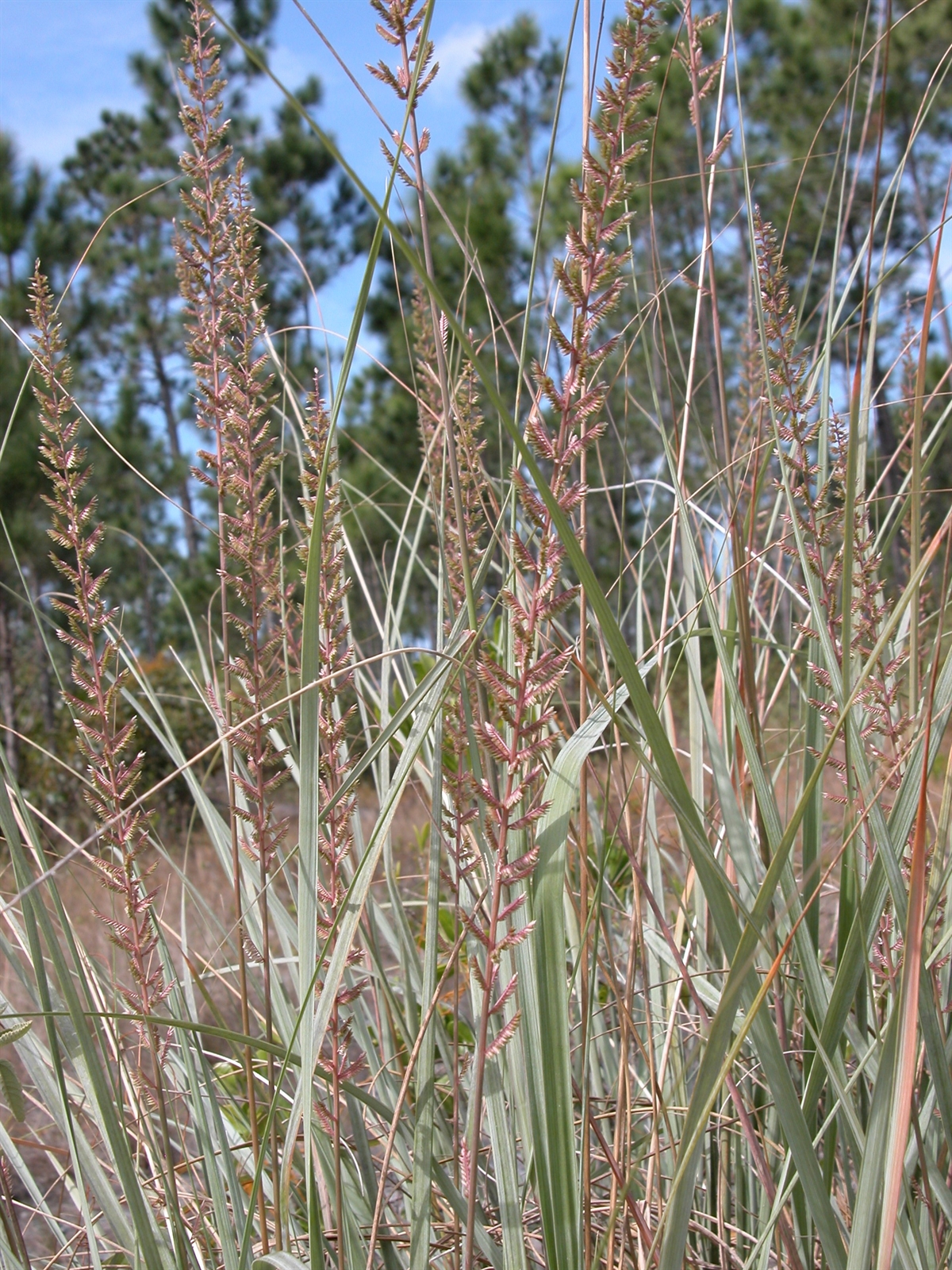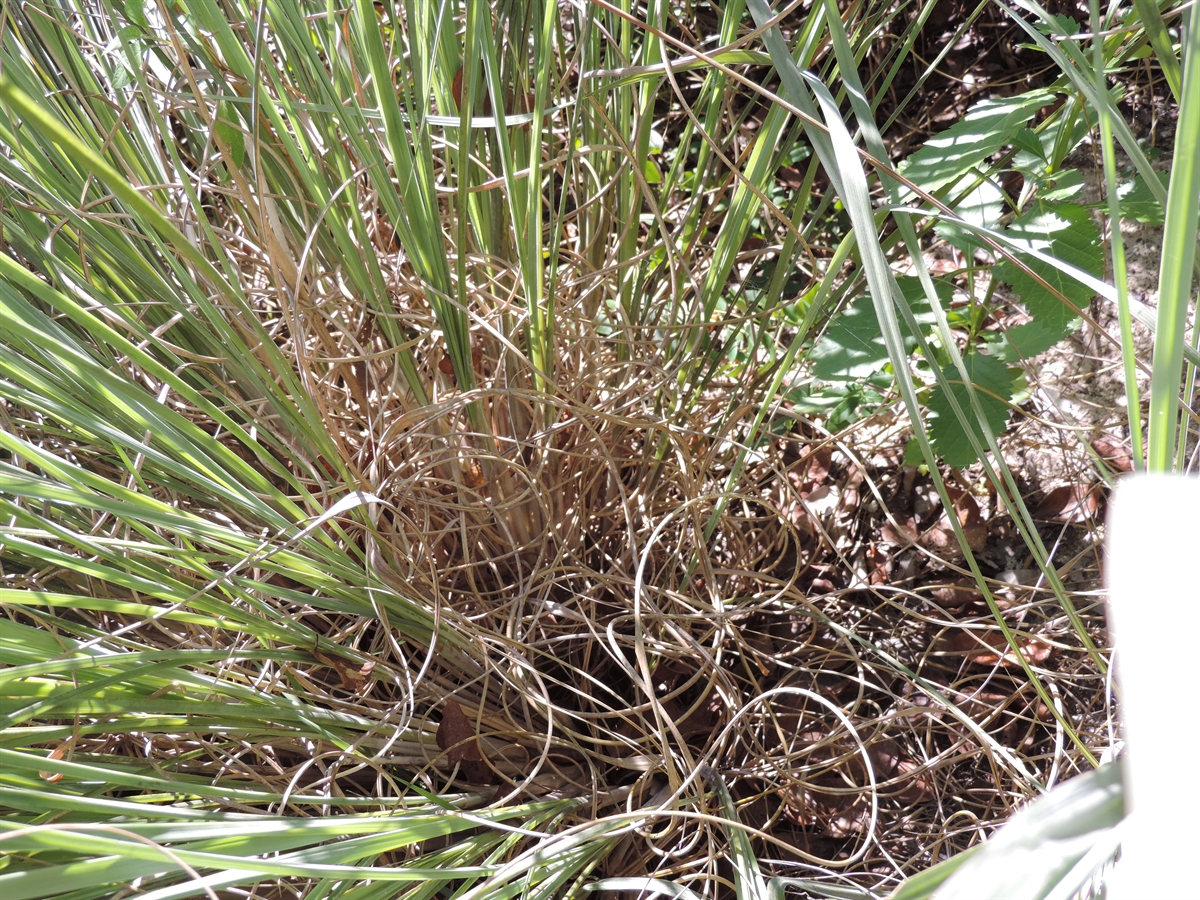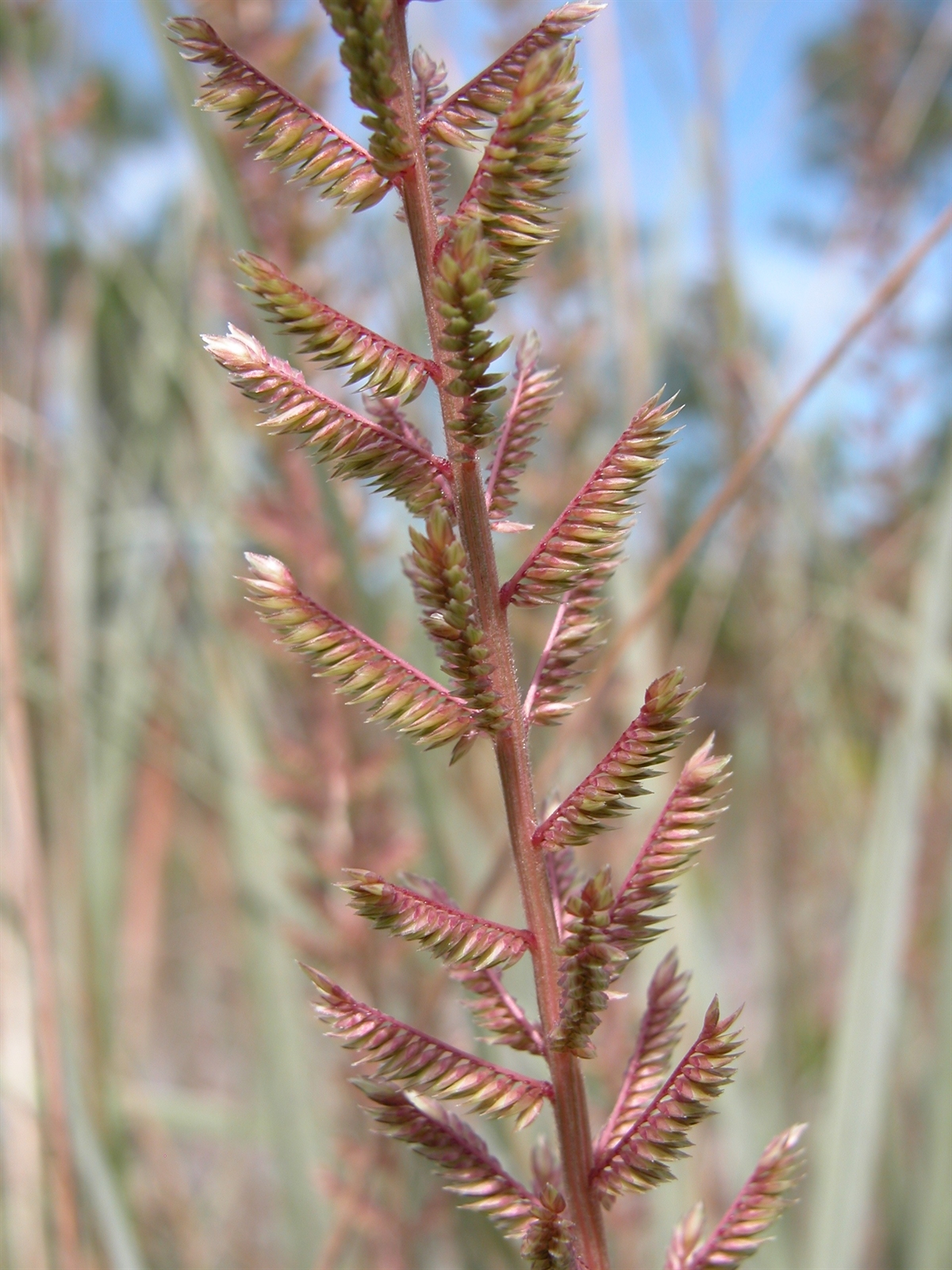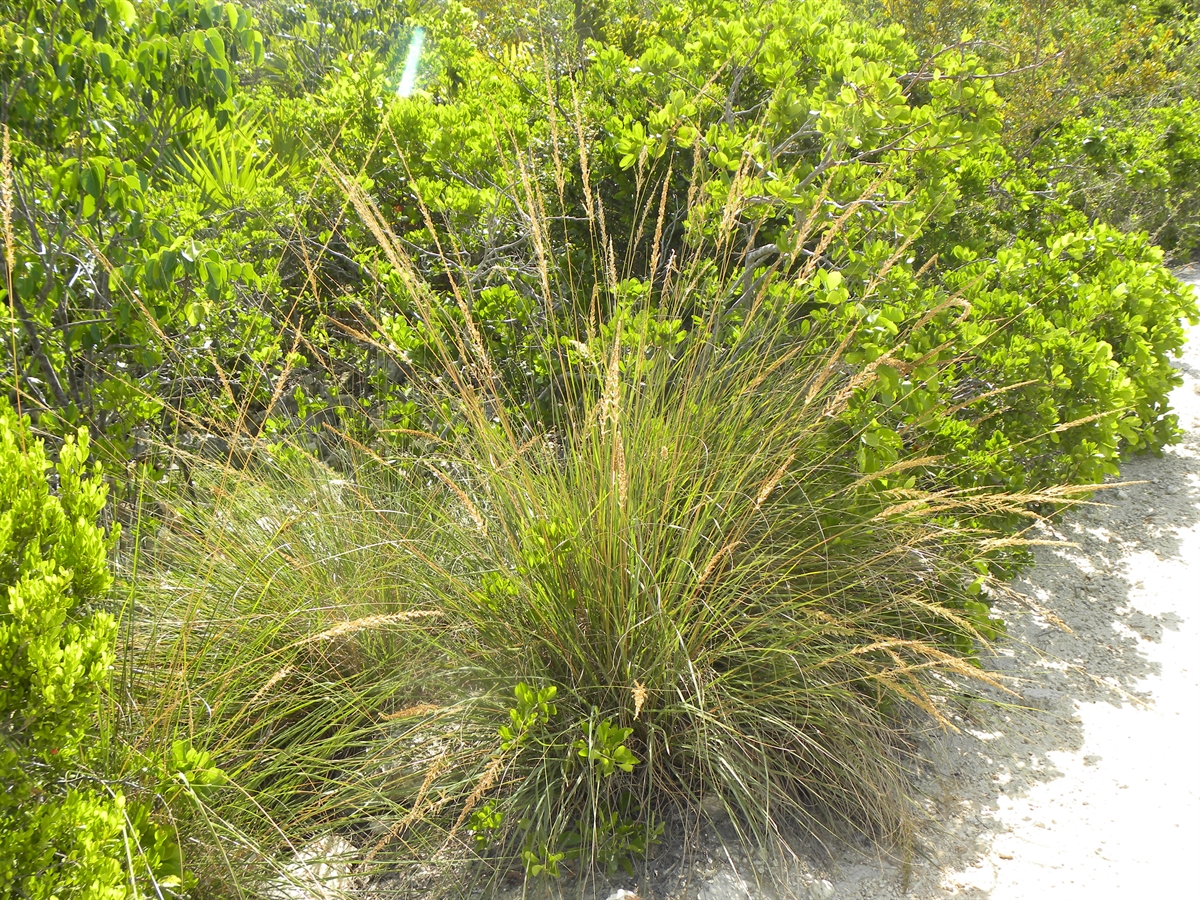Habit: Uniola virgata grows as a clumping perennial up to 90 in height. The leaves are arranged alternately, to 70 in length, with a sheath extending along the stem that is pubescent along its edge. At the point of divergence of the leaf sheath to the leaf blade is a small ciliate/fringed ligule. The leaves are stiff, parallel veined, and become coiled.
The zygomorphic flowers are arranged in terminal panicles that are up to 2 meters in height. In the panicle there are 5-15 short branches. Each with numerous laterally compressed spikelet. At the base of each spikelet are 2 yellow brown structures called glumes. In each spikelet there are 2-6 florets, each subtended by 2 additional structures (lemma and palea). The lower flowers are sterile and the upper fertile and have 3 unfused stamens and a superior ovary each with a single locule and seed. The fruit is a caryopsis.
Habitat: Uniola virgata grows in Dunes, Pinelands, and Dry Broadleaf Evergreen Formation – Shrulands (scrubland coppice).
Distribution: Uniola virgata occurs on the central and northern island groupings within the Lucayan Archipelago as well as the Greater Antilles and the Leeward Islands.
Medicinal/Cultural/Economic usage: Uniola virgata is not known to be used medicinally in the Lucayan Archipelago.



